The best microphones to buy in 2022: 15 best podcasting mics
If you’re starting your first podcast or planning to upgrade, these microphones will help you speak volumes.
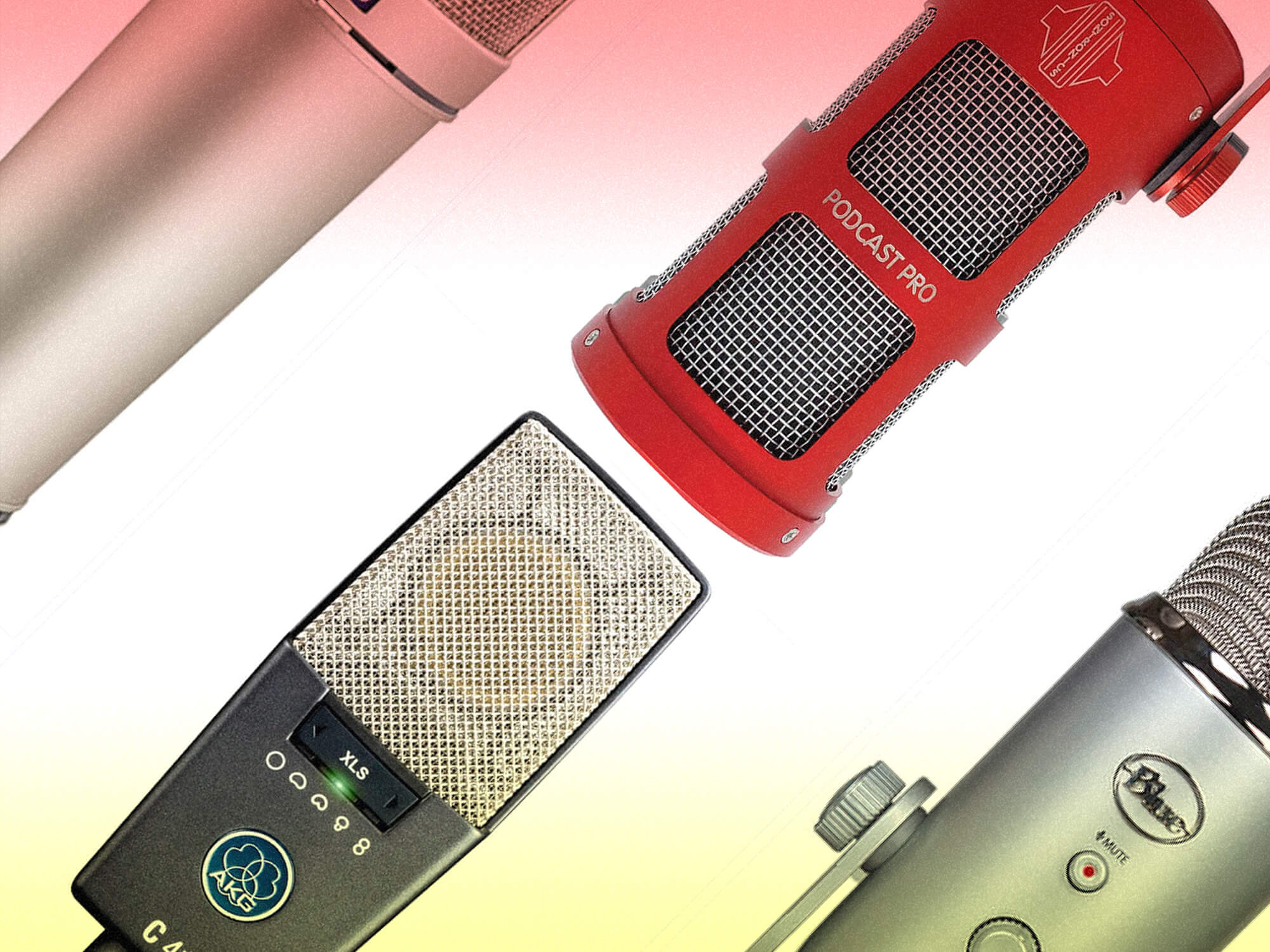
Whether you plan to speak on camera or be an invisible voice in the ether, you’ll want to sound your best when you hit record and start podcasting. The Blue Microphones Yeti and Shure SM7B are ubiquitous among podcasters, but there are many more options available. We’re sure one of the following mics will meet your needs.
- READ MORE: How to set up a podcast studio for $500
What else do you need to start podcasting?
If you’re using a microphone without USB connectivity, you’ll need an audio interface to bring your voice into the digital domain – here’s a list we put together on the best ones you can pick up for under $500.
You’ll also want to have a pop filter if your microphone doesn’t already come with one or have one built-in. These help you minimise unwanted plosives. These are low-frequency thuds made when you pronounce ‘p’s and ‘b’s, sending a blast of air across your microphone’s diaphragm.
The best podcasting microphones of 2021 at a glance:
- RØDE PodMic
- Neumann BCM 705
- Sontronics Podcast Pro
- Shure MV7
- Beyerdynamic M 70 PRO X
- Røde NT1-A
- Audio-Technica AT2040
- Electro-Voice RE20
- AKG Ara and Lyra
- Shure SM7B
- Blue Microphones Yeti
- AKG C414
- Neumann U87
- Samson Q9U
- sE Electronics NEOM USB
RØDE PodMic
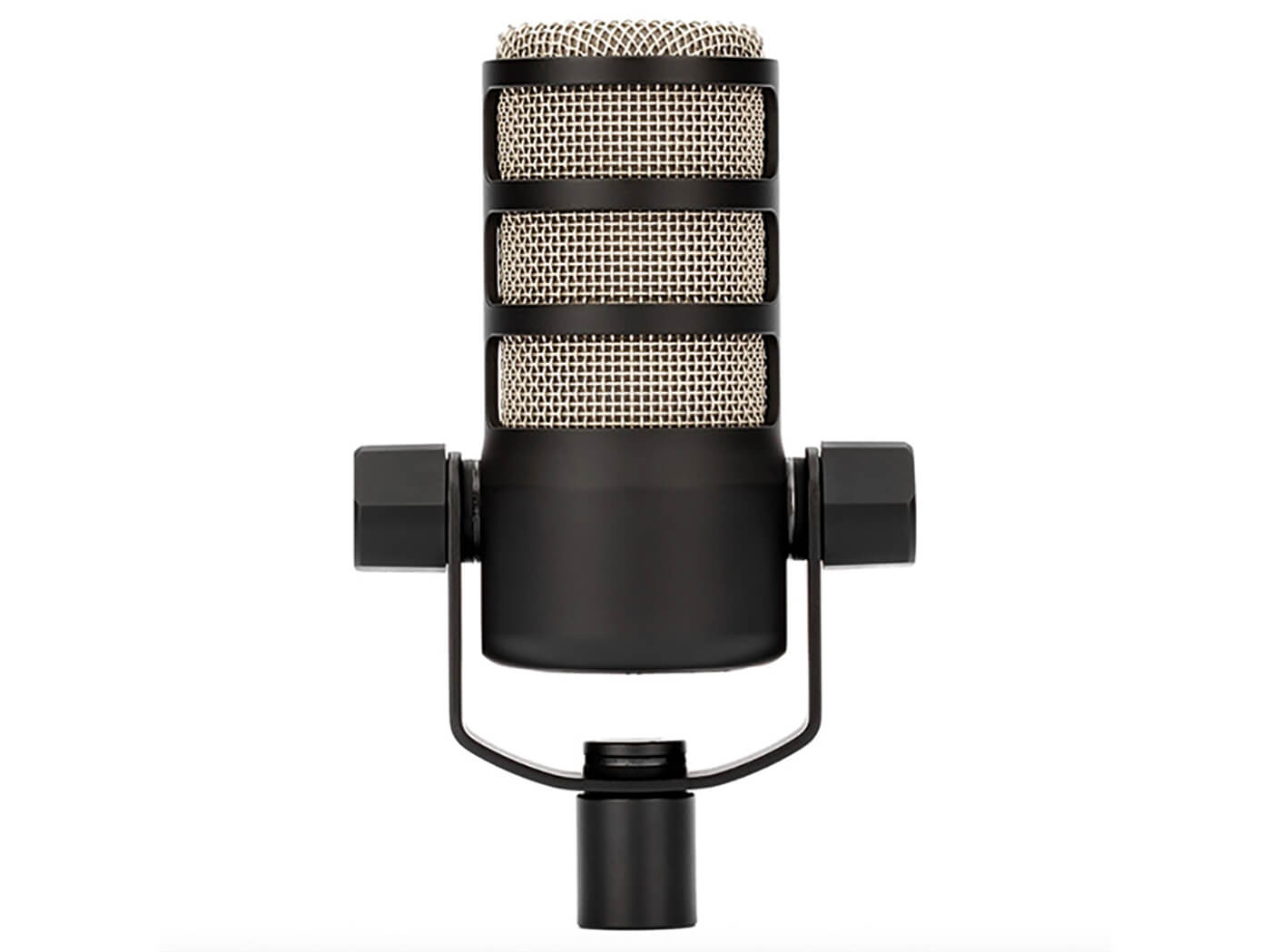
With robust construction, vocal-friendly tonality and excellent off-axis rejection, the RØDE PodMic is an exceptional microphone for podcasting. And that’s even before you consider its $99 price tag. This dynamic microphone has been optimised for vocals, offering a polished sound without much processing. Its compact size makes it easy to manoeuvre around tight spaces and the in-built pop filter – while it doesn’t prevent plosives entirely – does make them more manageable in post-production.
In our review, we said: “The PodMic is an enormously capable microphone for voice applications and has a very similar tone to the Shure SM7B with high boost engaged, at under a third of the price.”
Features:
- Type: Dynamic microphone
- Frequency response: 20Hz – 20kHz
- Pickup Patterns: Cardioid
- Phantom Power: No
- Output connection: XLR
- Other features and accessories: Built-in pop filter
- Price: $99
Read our full review here. Learn more at rode.com.
Neumann BCM 705
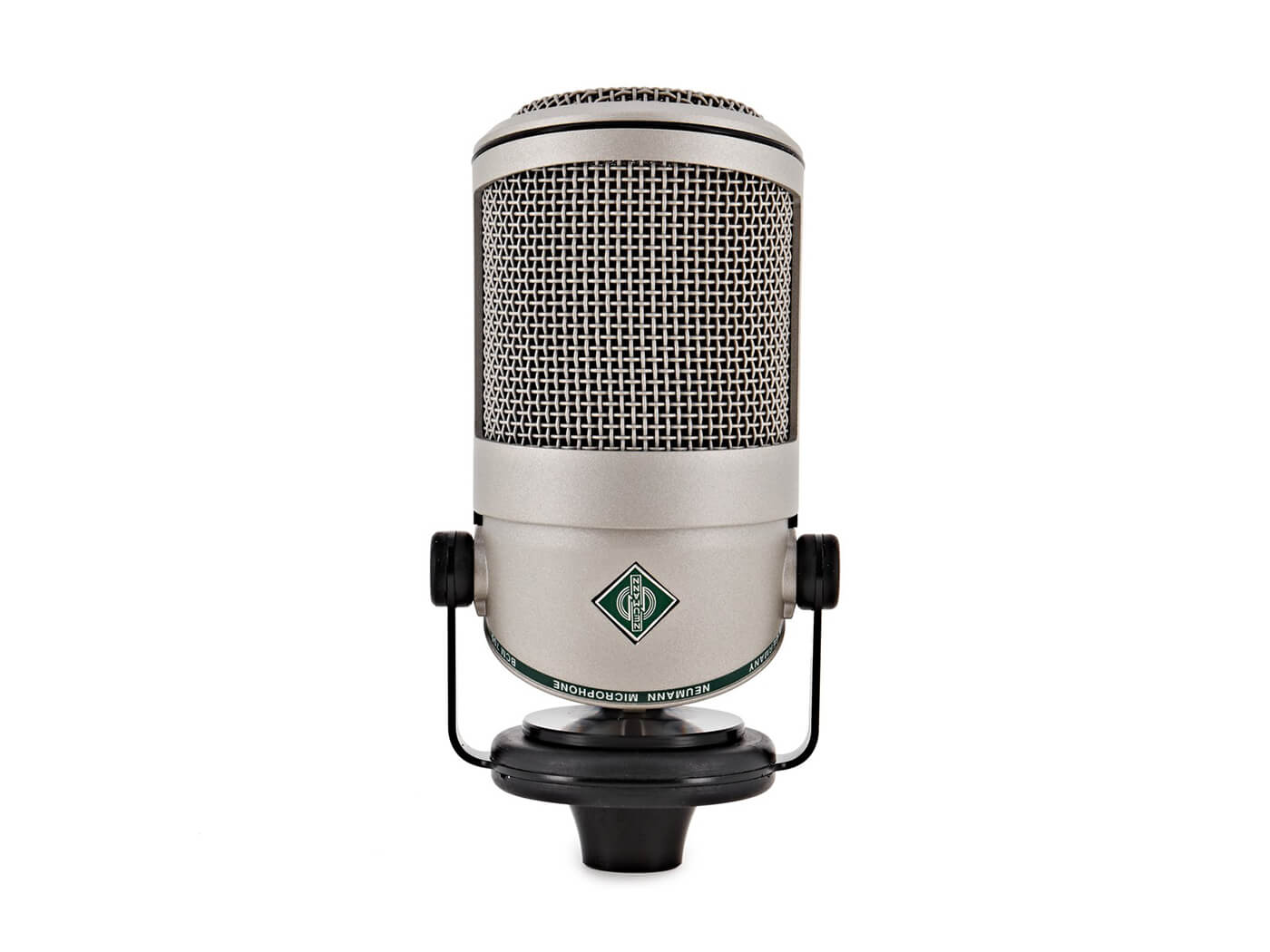
The BCM 705 is the only dynamic microphone from the revered German manufacturer. And it’s a professional-grade microphone that handles all manner of voice with finesse. A significant inspiration for the BCM 705 is the smooth FM-broadcast tone of American radio, and the microphone’s frequency response reflects this. There’s a low-shelf at 200Hz, paired with two boosts at 5kHz and 8kHz for added clarity. That means this won’t likely be an all-rounder of a mic, but it works beautifully for the spoken word.
In our review, we said: “If you’re branching into more spoken-word recording, you’d be hard-pressed to encounter any problems with this solution.”
Features:
- Type: Dynamic microphone
- Frequency response: 20Hz – 20kHz
- Polar Patterns: Hypercardioid
- Phantom Power: No
- Output connection: XLR
- Other features: Internal pop shield, internal shock mount
- Price: $699
Read our full review here. Learn more at en-de.neumann.com.
Sontronics Podcast Pro
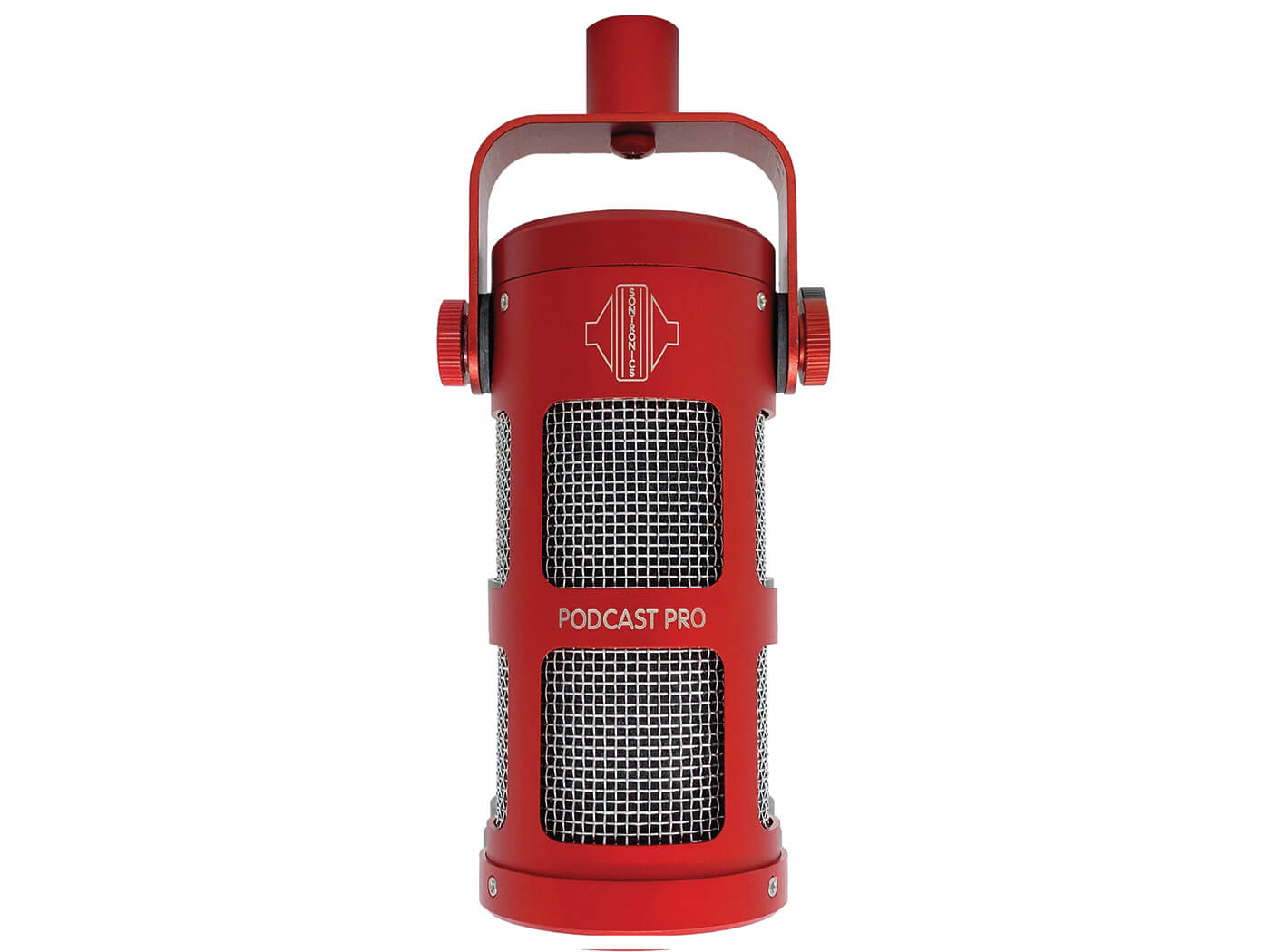
Testing the podcasting waters but don’t want to drop a whole wad of cash getting set up? Consider the Sontronics Podcast Pro. When paired with an XLR-USB cable, this affordable microphone lets you skip the audio interface to connect directly with your computer or gaming console. It’s also great for streaming on Twitch, both for its aesthetics and for a level of audio fidelity to which headsets can’t compare.
In our review, we said: “If you’re about to embark on a new career as a podcaster, this microphone might just become your best friend.”
Features:
- Type: Dynamic microphone
- Frequency: 50Hz – 15kHz
- Polar Patterns: Super cardioid
- Phantom Power: No
- Output connections: XLR (Sontronics XLR-USB Cable, $26)
- Other features: Internal pop shield, available in black and red
- Price: $110
Read our full review here. Learn more at sontronics.com.
Shure MV7
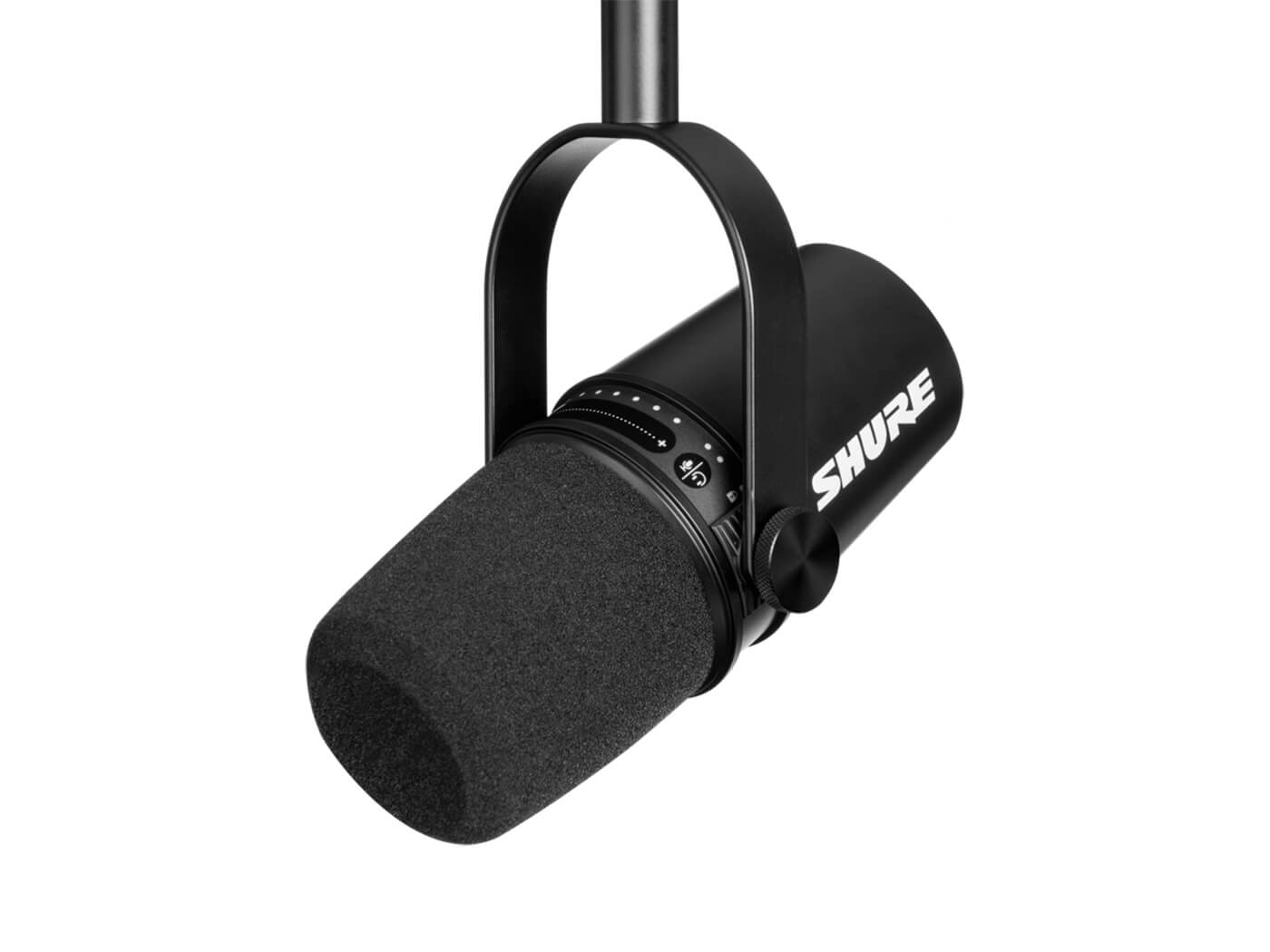
With the recent uptick in live streaming and podcasting – thanks in large part to the pandemic which shan’t be named – Shure found an opportune time to launch the MV7, XLR/USB compatible microphone.
This dynamic microphone comes equipped with Shure’s Voice Isolation Technology and Auto Level Mode. The former is designed to keep the vocal elements of a recording in focus. The latter allegedly keeps levels in check to compensate for changes in vocal dynamics and user movement – performed by an integral compressor. Both these features work to let creators spend more time creating and less time in post-production. With XLR and USB connectivity you’ve got a user-friendly microphone that can join or become your entire podcasting setup. It will also work with an iOS device with an optional cable.
In our review, we said: “Shure takes a step or two beyond the norm with the MV7, developed with podcasting in mind. The mic offers live signal processing and harnesses the sound isolation benefits of a dynamic capsule rather than a more ubiquitous condenser.”
Features:
- Type: Dynamic microphone
- Frequency response: 50Hz – 16kHz
- Polar Patterns: Cardioid
- Phantom Power: No
- Output connections: XLR, Micro USB
- Sampling rates/Bit depth: 44.1kHz, 48kHz/16-bit, 24-bit
- Other features: Built-in headphone monitoring, Voice Isolation Technology, Auto Level Mode
- Price: $224
Read our full review here. Learn more at shure.com.
Beyerdynamic M 70 PRO X
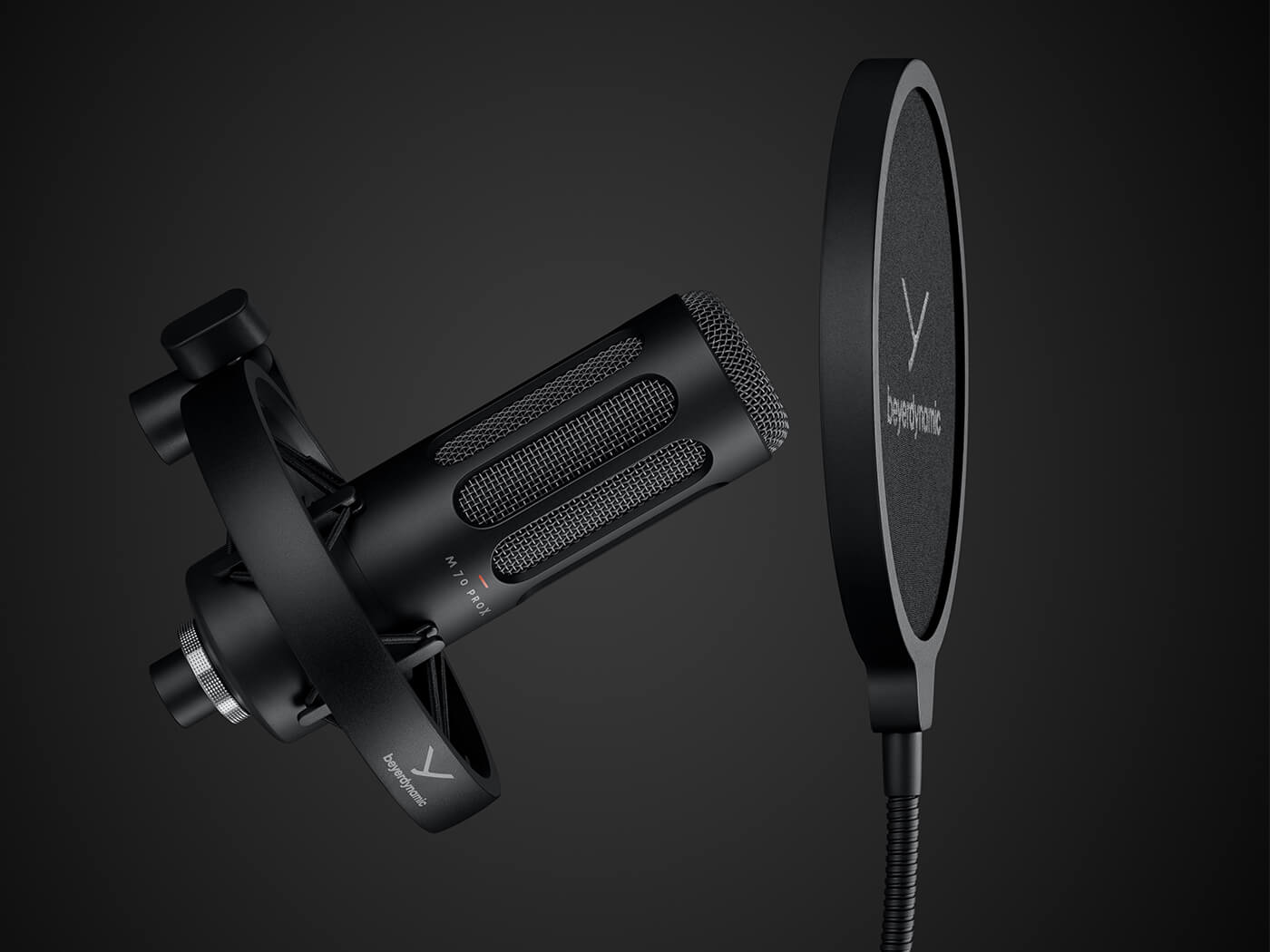
Beyerdynamic’s M 70 Pro X, released alongside its counterpart microphone, the M 90 Pro X, was built with podcast makers in mind because of its speech-optimised sound. The M 90 Pro X, on the other hand, is designed for music making. Both are brilliant, but if you’re a content creator, 70 is certainly the one you’ll want to go for.
In our review of the M 70 Pro X, we said: “…it has been voiced to produce a rich, upfront radio studio sound. And while you get a beautifully deep and chesty tone when working in close proximity to the mic, it doesn’t fall victim to the proximity effect, so when you back off from the mic, the firm bottom-end remains intact.”
Features:
- Type: Dynamic microphone
- Frequency response: 25Hz – 18kHz
- Polar Patterns: Cardioid
- Phantom Power: No
- Output connections: XLR
- Other features: Aluminium housing, included pop filter, elastic shockmount, protective bag
- Price: $299
Read the full review here. Learn more at beyerdynamic.com.
RØDE NT1-A

Offered at a modest price in a bundle catering for vocal recording, the RØDE NT1-A is a large-diaphragm condenser that could be ideal for those who want to try podcasting and home recording.
Thanks to a bump in the 12khz region, the NT1-A has a bright, crisp tone that works for voice, guitars and percussion. Plus, RØDE’s Complete Vocal Bundle comes with a pop shield, shock mount and 20-foot XLR cable, meaning all you’d need to get started is a decent audio interface, some headphones and a stand.
Features:
- Type: Large-diaphragm condenser microphone
- Frequency response: 20Hz – 20kHz
- Polar Patterns: Cardioid
- Phantom Power: Yes
- Other features: Pop shield, shock mount, 20’ XLR cable
- Price: $229
Learn more at rode.com.
Audio-Technica AT2040
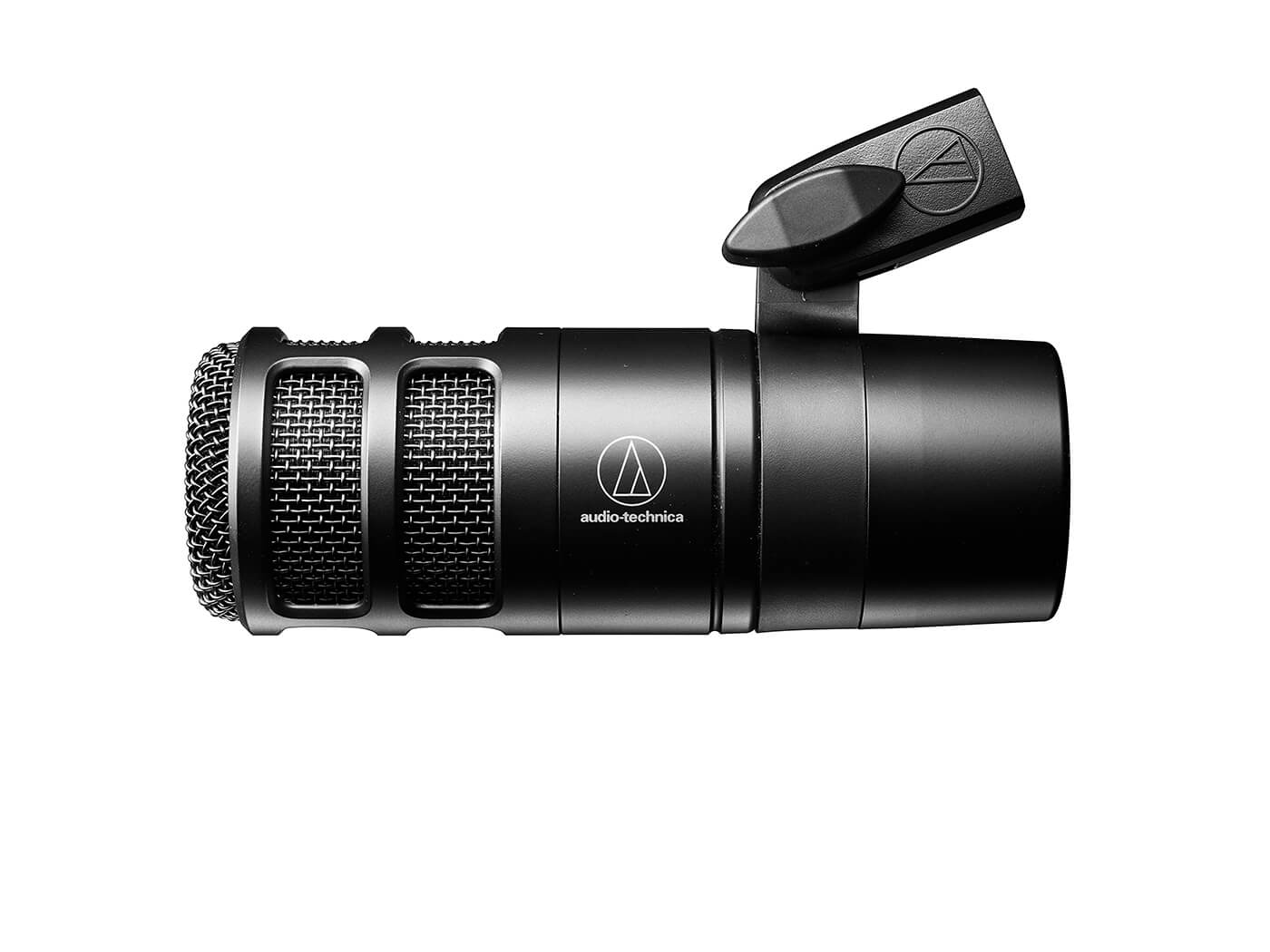
Superseding the AT2035 microphone, the deliciously affordable AT2040 by Audio-Technica is great for reducing that ‘hunched over the microphone’ pose that can ruin your podcast posture. Built solidly, the mic comes on a pivoting standing mount, which can instantly turn your bedroom into a professional radio studio.
In our review of the AT2040, we said: “This is a serious podcast mic at an attractive price, designed for those going beyond simple USB plug and play, and using slightly more extensive setups that include interfaces or mixers. It’s ideal for multi-mic podcasting setups, paired with the appropriate stands, to record several people around a table. If you’re serious about podcasting, this is a sensible investment.”
Features:
- Type: Dynamic
- Frequency response: 80Hz – 16kHz
- Polar Patterns: Hypercardioid
- Phantom Power: Yes
- Output connections: XLR
- Other features: Internal shockmount and multi-stage popshield, 600 ohms impedance, mounting clamp and adapter supplied, large diaphragm, 615g weight
- Price: $99
Read our full review here. Learn more at audio-technica.com.
Electro-Voice RE20
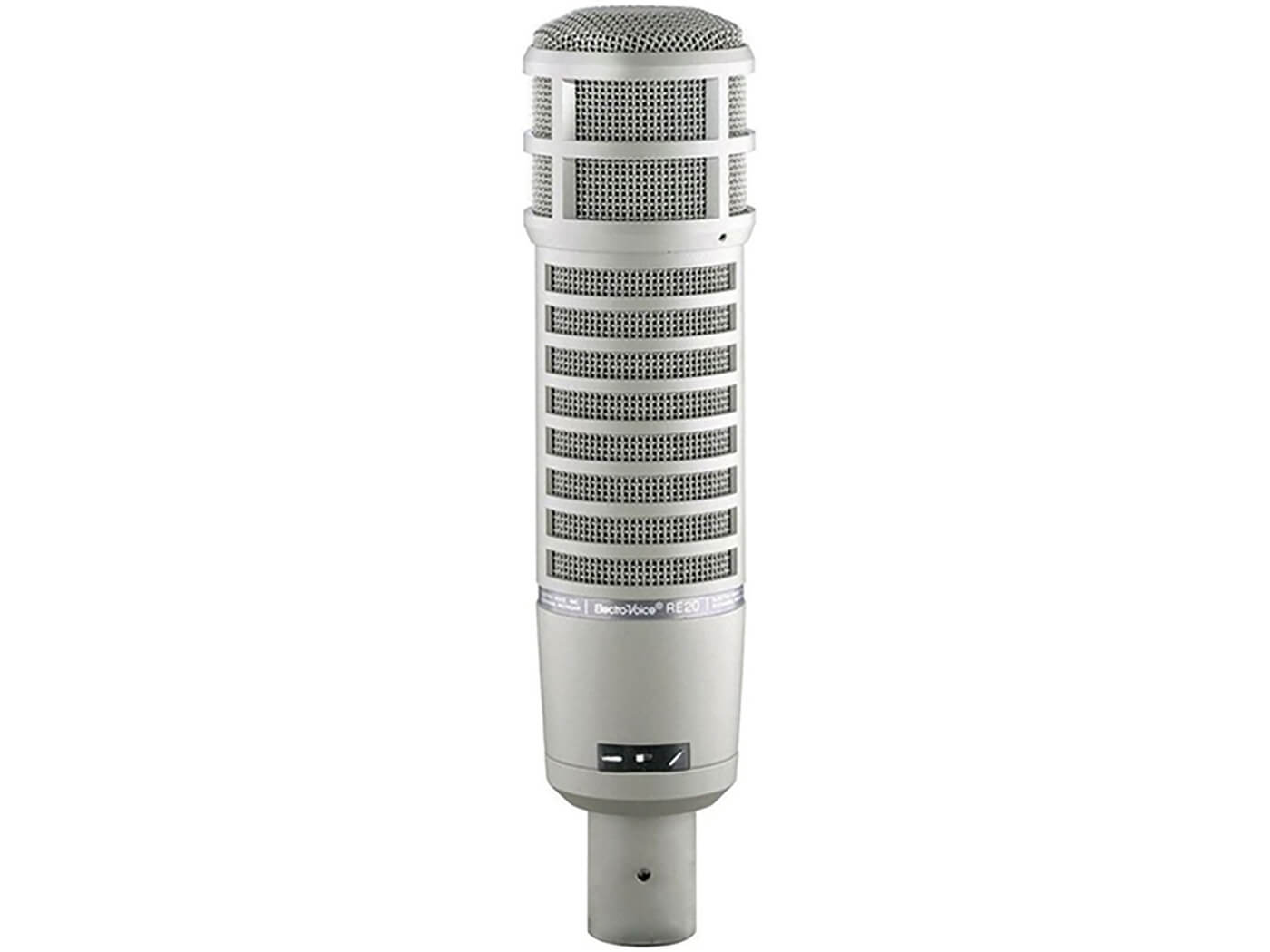
A broadcasting stalwart, the RE20 remains just as popular these days in the podcasting scene. Well known for its excellent off-axis rejection and natural, full-bodied sound, this microphone excels in the realms of vocal recording. That’s partly because of its so-called Variable-D technology, which incorporates ports along the chassis’ length to reduce the tonal shift associated with proximity effect.
If you’re thinking of picking up an RE20, keep in mind that it is a low-sensitivity microphone and does require a fair amount of gain. If you’re finding your signals weak, you’ll want to pick up a Cloudlifter, a low-noise mic booster that adds 25dB of clean gain.
Features:
- Type: Dynamic
- Frequency Response: 45Hz – 18kHz
- Polar Patterns: Cardioid
- Output connections: XLR
- Phantom Power: No
- Other features: Mid-bass tone-shaping switch, stand mount, carrying case
- Price: $449
Learn more at electrovoice.com.
AKG Ara and Lyra
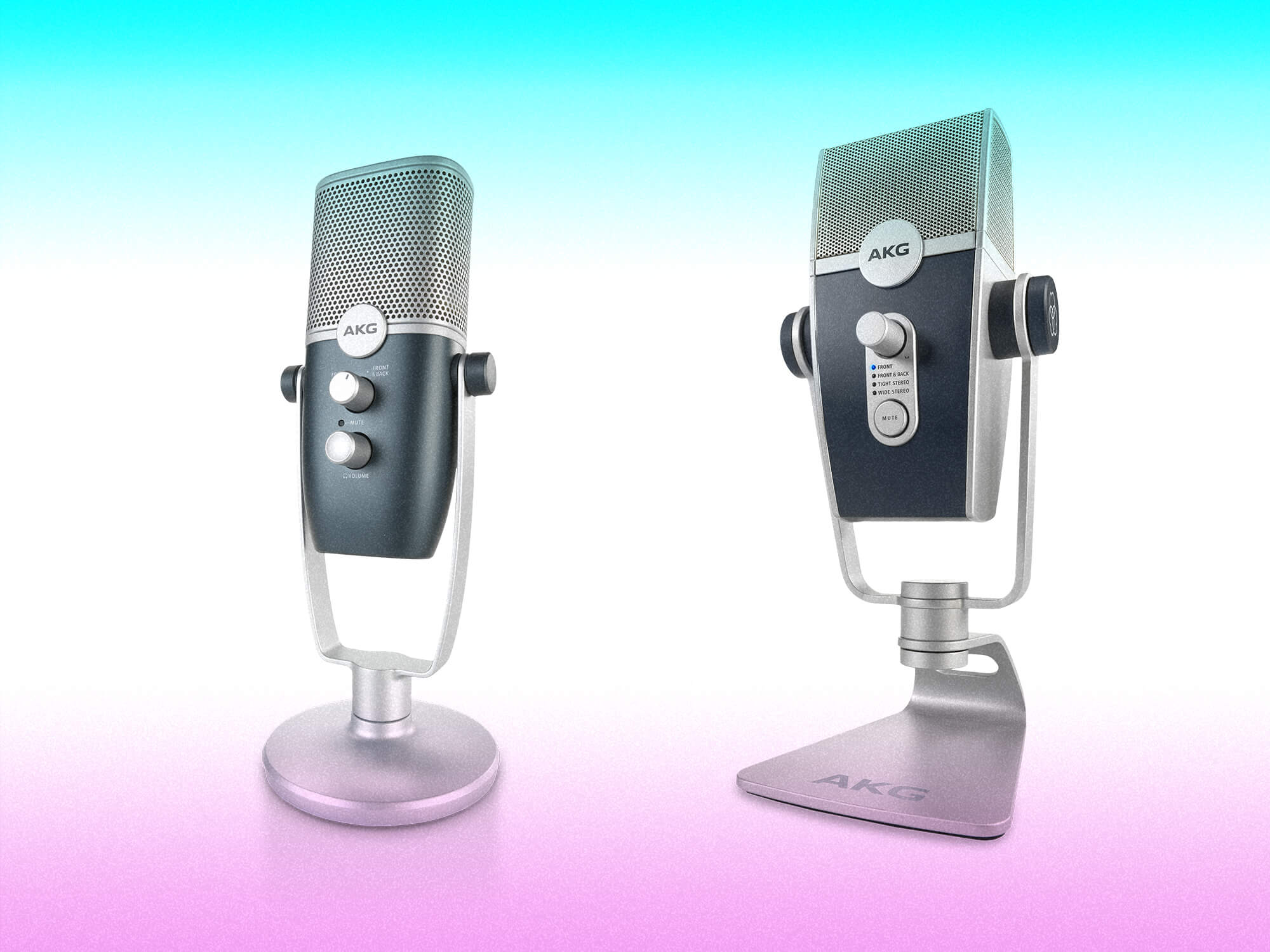
Plug in and play is the aim of the game with AKG’s podcast-ready USB microphone duo, the Ara and Lyra. They’re designed to make all the gruelling faff of setting up your mic fade away, offering a simple solution – with surprisingly great sound.
The Ara is more affordable, while the Lyra is the slightly more expensive bigger brother of the two, offering higher maximum resolution and four pickup options, thanks to its tilting stand. In our review of the two, we said: “These are both excellent all-round microphones and all-in-one solutions for clutter-free and mobile recording that will appeal to a variety of users, particularly podcasters or anyone working with voiceovers.”
Features:
- Type: Condenser
- Frequency Response: 24-bit, 96kHz (Ara) or 192kHz (Lyra) operation
- Polar Patterns: Cardioid & hypercardioid
- Output connections: XLR
- Phantom Power: N/A
- Other features: Zero-latency monitoring via headphones, integrated desk stands, stand mount adapters included, internal shock mount (Lyra)
- Ara price: $99
- Lyra price: $149
Read our full review here. Learn more at akg.com.
Shure SM7B
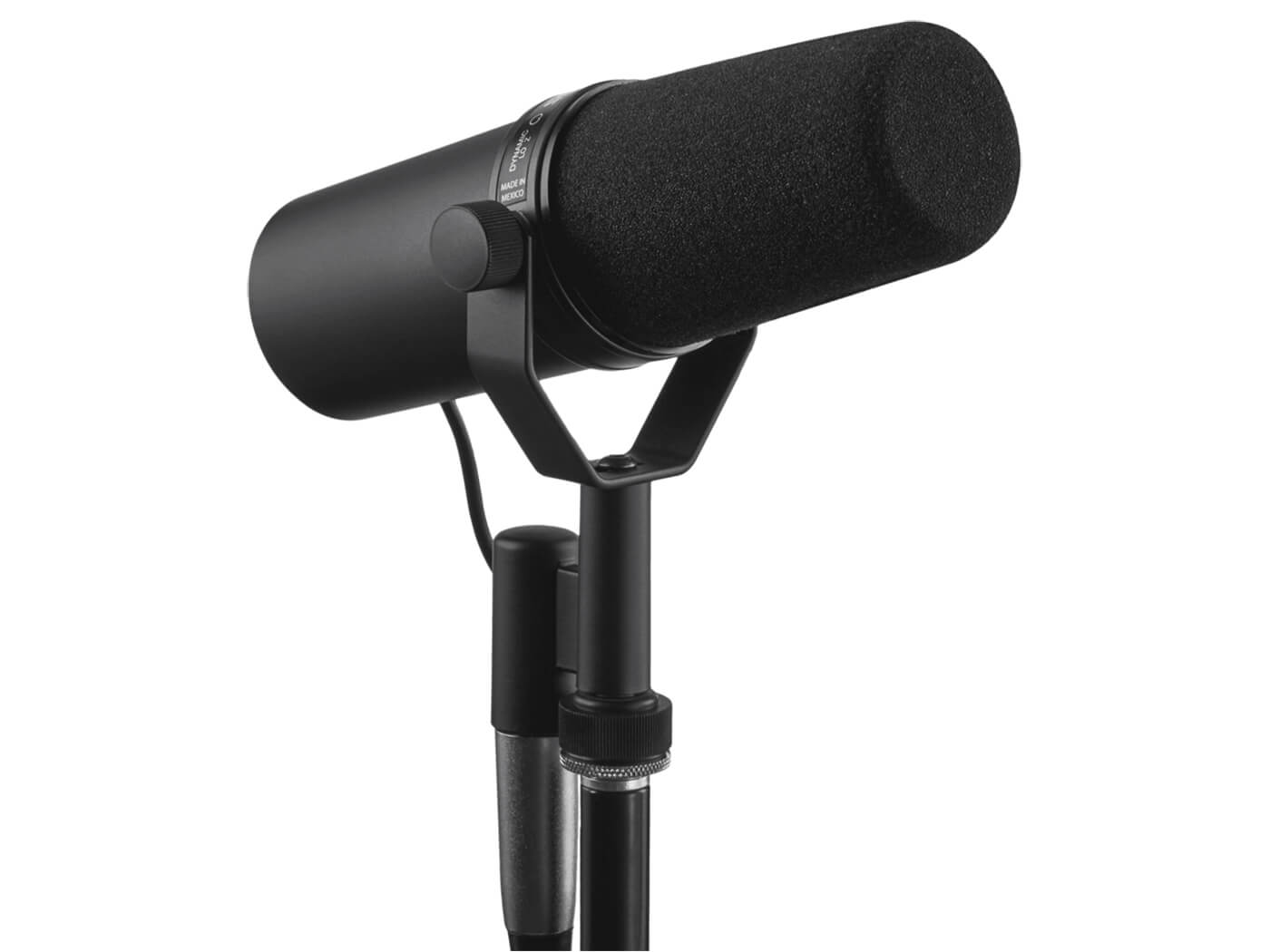
Shure’s SM7 microphones have been in production, in one form or another, since the 1970s and have always been exceptional for vocal recording. Yes, Joe Rogan uses an SM7B for his podcast, and the original SM7 was Michael Jackson’s mic of choice.
The SM7B is the latest iteration of the popular vocal microphone, featuring a built-in wind screen for resistance against plosives and bass roll-off and presence boost switches. Like the RE20, this is a low-sensitivity microphone, so you will likely need a mic booster such as the Cloudlifter to get a workable recording level.
Features:
- Type: Dynamic
- Frequency Response: 50Hz – 20kHz
- Polar Patterns: Cardioid
- Phantom Power: No
- Other features: Bass roll-off, presence boost
- Price: $399
Learn more at shure.com.
Blue Microphones Yeti
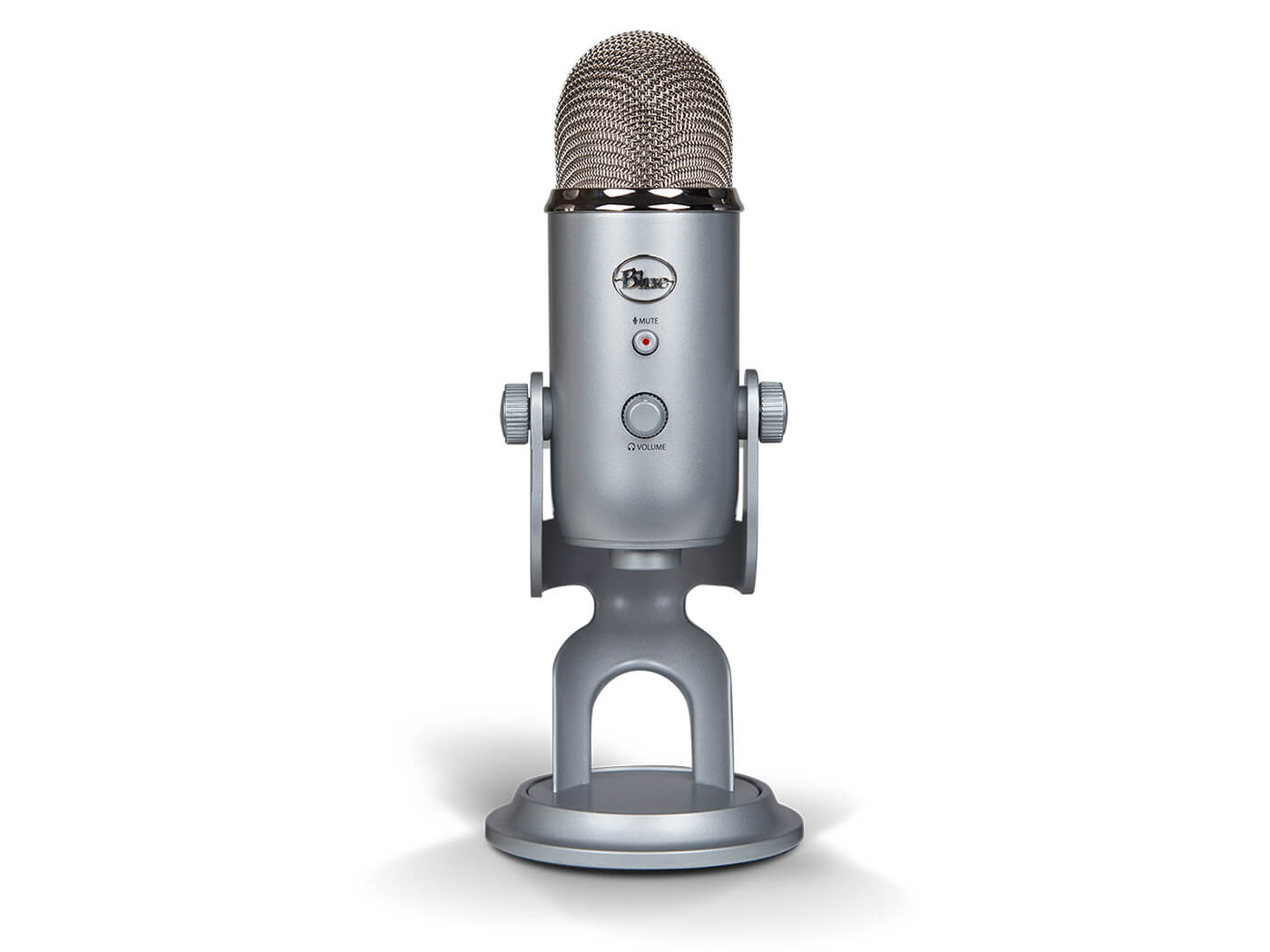
Of course, we have to include the Yeti from Blue Microphones on our list. Not only did this microphone kick off a market trend for decently priced USB microphones, it remains one of the most popular and flexible options for podcasters.
At the heart of the Yeti is simplicity. You get a single gain knob, a mute button and a headphone output – and USB connectivity means no audio interface is required. Plus, it features four polar patterns and an included stand that’s robust enough not to get knocked over with an accidental swipe.
Features:
- Frequency response: 20 Hz – 20 kHz
- Type: Multi-pattern large-diaphragm condenser
- Polar Patterns: Cardioid, stereo, omnidirectional, bi-directional, stereo
- Phantom Power: N/A
- Other features: Zero-latency headphone monitoring, adjustable stand, USB cable
- Price: $130
Learn more at bluemic.com.
AKG C414
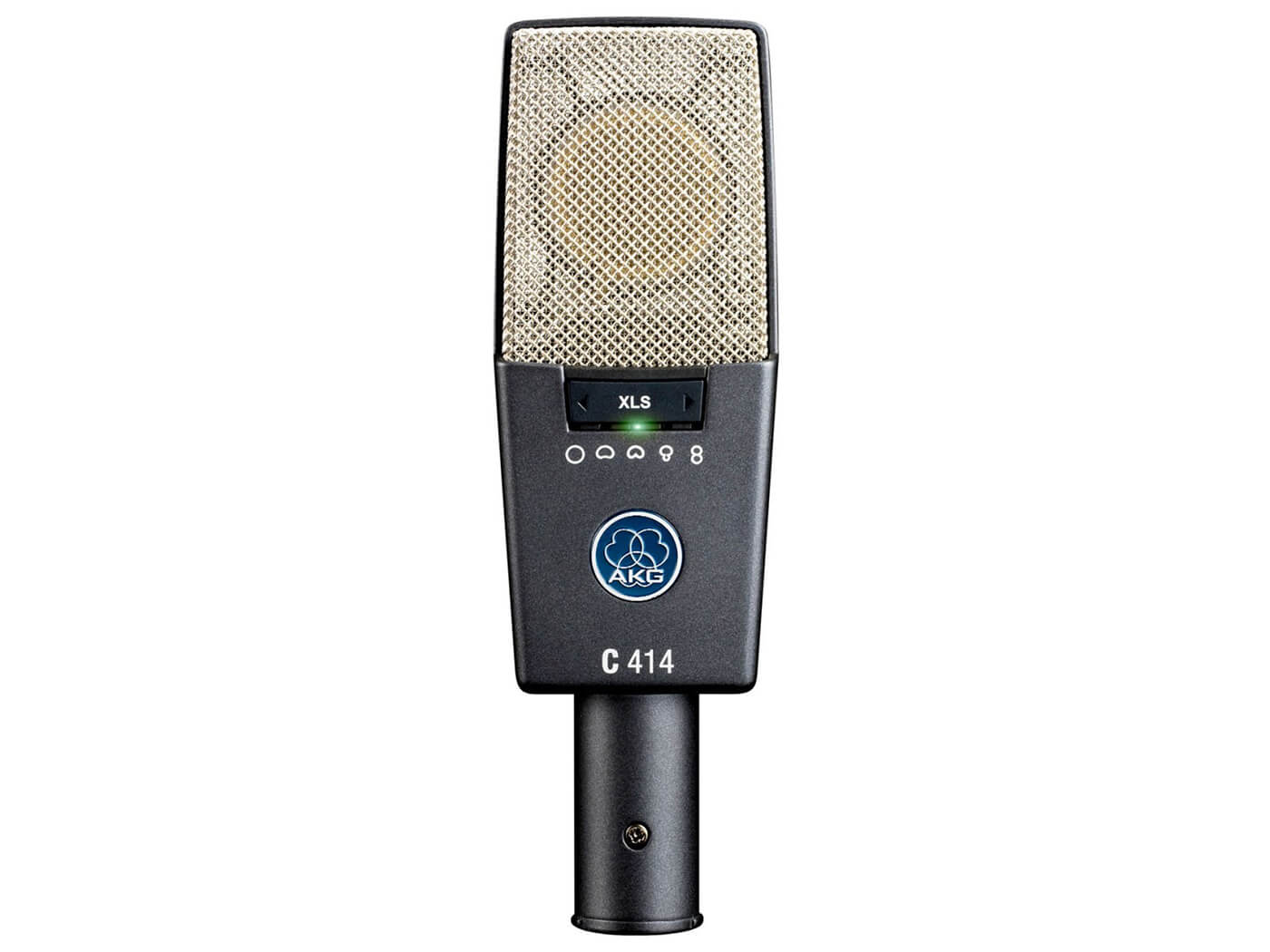
Walk into any professional recording studio in the world, and you’ll probably find at least a pair of AKG C414s in the mic locker. These are some of the most widely applied in the studio environment and are equally capable of doubling as your primary podcasting microphone.
The modern C414s come in two editions, with capsule design setting them apart. The C414 XLS provides a flatter frequency response and is more versatile, while the C414 XLII’s capsule, based on the design of the revered C12, adds a 3kHz presence boost that’s flattering for female voices. Both are stellar options for podcasting and offer five polar patterns (nine including blended options) along with three pads and low-cut filters.
Features:
- Type: Multi-pattern large-diaphragm condenser
- Frequency Response: 20Hz – 20kHz
- Polar Patterns: Omni, Wide Cardioid, Cardioid, Hypercardioid, Figure-eight
- Other features: Pad at -6, -12 and -18 dB; Low-cut filter at 160Hz, 80Hz and 40Hz
- Price: $1,000
Learn more at uk.akg.com.
Neumann U87
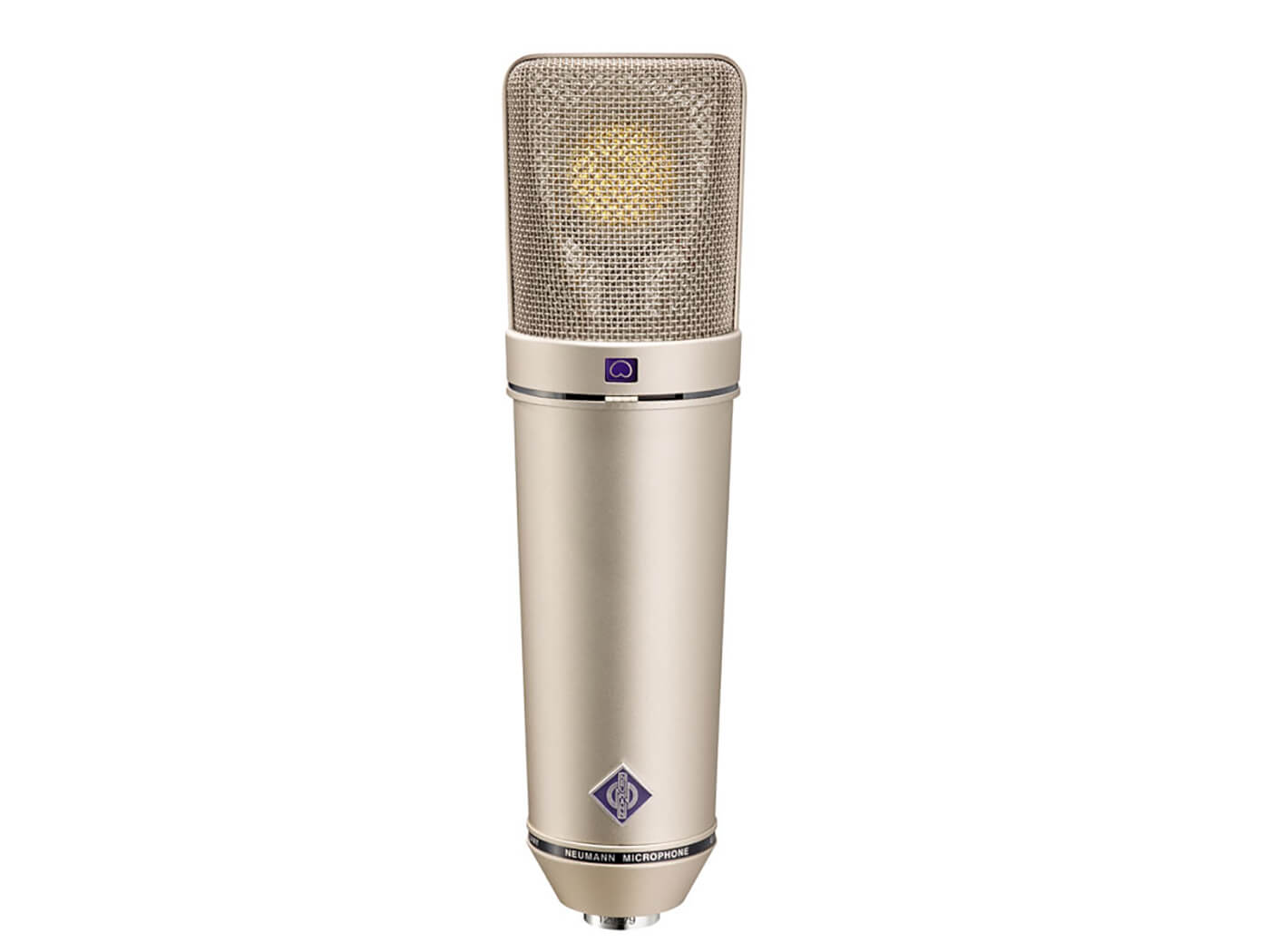
Lovingly referred to as every engineer’s second favourite microphone, because of its array of applications, the Neumann U87 is a legendary all-rounder that handles voice just as well as it handles guitar, percussion and more.
This large-diaphragm condenser offers three polar patterns (cardioid, omni and figure-eight); a -10dB pad for capturing louder sources, and a low-cut for curbing proximity effect while in either of the directional modes.
The U87 has also been a big part of NPR’s signature broadcast sound for decades, where the low-cut is engaged to emphasise the mid and high-frequency information of the voice. This ensures that no matter the listening environment – in a car with the windows rolled down, in a kitchen with a dishwasher going or even on smartphone speakers – voice always stands out.
Features:
- Type: Capacitor (Condenser)
- Frequency response: 20Hz – 20kHz
- Polar patterns: Cardioid, Omni, Figure-eight
- Other features: Low-cut switch, -10db Pad
- Price: $3,695
Learn more at neumann.com.
Samson Q9U
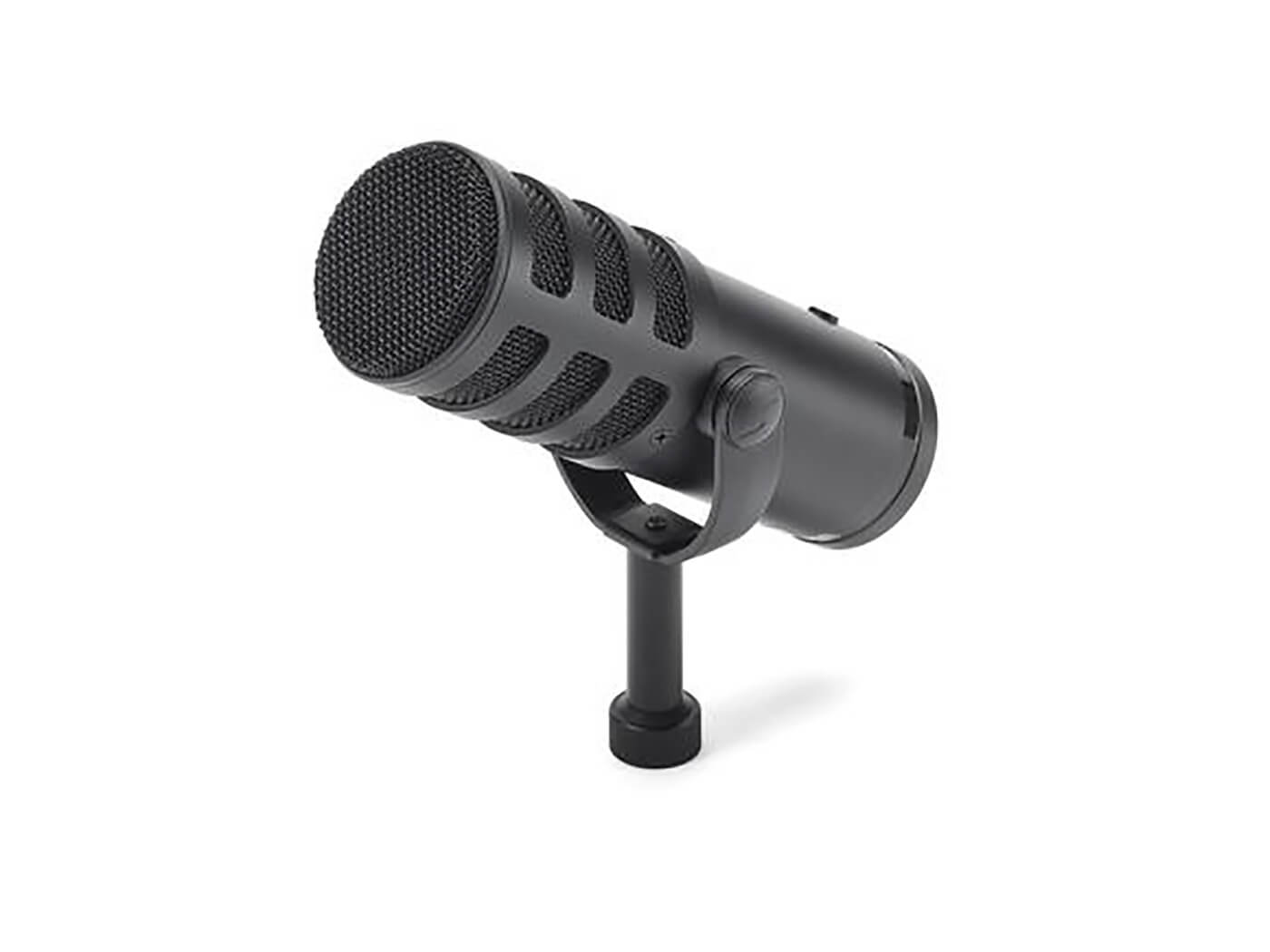
Samson’s Q9U microphone is a hefty, hardy piece of kit, first and foremost. Secondly, its USP is its low-cut and mid-boost functions, which help take away a muddy low-end in the voices you want to record.
In our review of the Q9U, we said: “Samson has rolled a lot up into the Q9U: broadcast quality sound, two EQ switches, USB interface with headphone output and mute switch, and all in a rock-solid build. At around $200 in the shops, it really is hard to ignore.”
Features:
- Type: Dynamic element with humbucking coil
- Frequency Response: 50Hz – 20kHz
- Polar Patterns: Cardioid
- Output connections: XLR, USB-C (digital out), 3.5mm (16Ω headphone out)
- Phantom Power: N/A
- Other features: 250Ω impedance, mute, low cut, mid boost controls
- Price: $199
Read our full review here. Learn more at samsontech.com.
sE Electronics NEOM USB
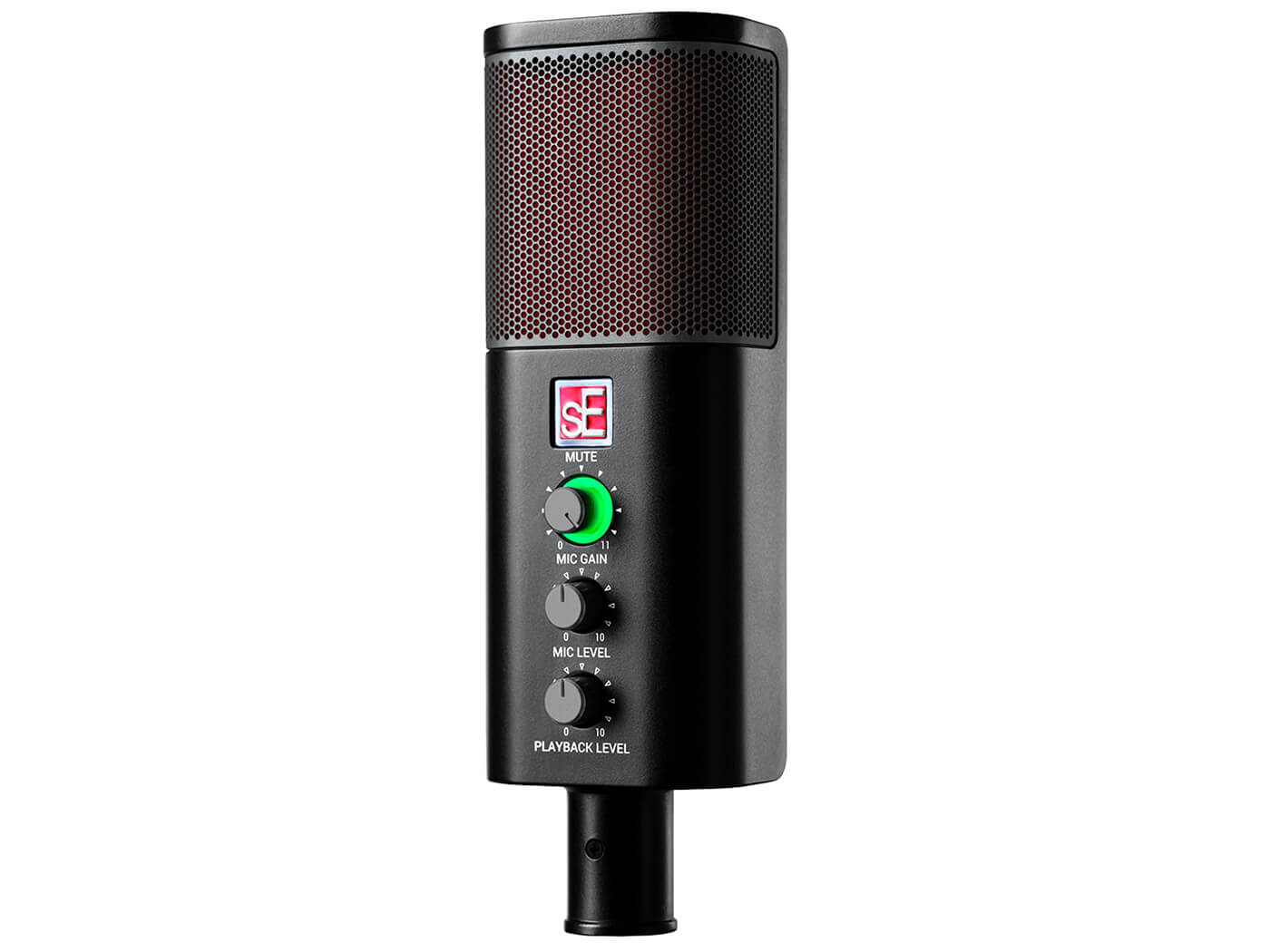
sE Electronics’ portable NEOM USB microphone is perfect if you’re looking to record podcasts on the fly using just your phone or tablet. But, the NEOM USB mic also garantuees great sound in any location, too, with its cardioid polar response pattern. This means that the NEOM picks up your voice and deflects unwanted background noises like cars, people or wind.
In our coverage of the NEOM USB, we said: “The NEOM USB is designed for all types of recording artists, be they musicians, vloggers or podcasters. With its plug-and-play design, sE touts the microphone as an ideal solution for those on the move, with an ease-of-use factor that provides pro-sounding audio regardless of the surroundings.”
Features:
- Type: Condenser
- Frequency Response: 20 Hz – 20 kHz
- Polar Patterns: Cardioid
- Output connections: USB-C
- Phantom Power: Yes
- Other features: Ultra-low latency design, independent knob controls, onboard mute button, built-in headphone port, universal mic shaft
- Price: $180
Read the full news story here. Learn more at seelectronics.com.
For more guides, click here.